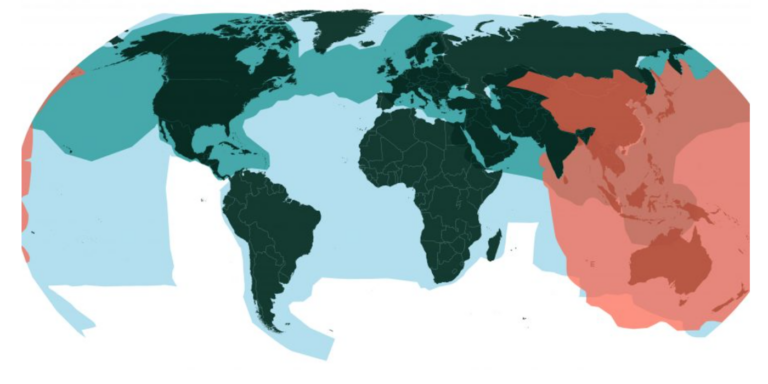Panasonic Avionics has activated its extreme high throughput (XTS) satellite coverage for services over China and the Asia Pacific region. The beam over Asia Pacific from APSTAR 6D, Panasonic Avionics’ first XTS satellite, has gone live through teleports in Beijing, Kuala Lumpur, Hong Kong and Perth. This beam will enable airlines based in the region, and others flying over it, to benefit from its enhanced satellite capacity for fast inflight connectivity services.
APSTAR 6D went into its first stages of operation in early 2021 and is now providing airlines flying across Asia Pacific with multiple gigahertz of new Ku-band capacity over China, including high-density air traffic routes across East Asia using XTS spot beams. APSTAR delivers 90 beams across the whole region, and 50Gbps in capacity.
The satellite is part of Panasonic Avionics’ third-generation communications (Gen-3) network of high speed, high-bandwidth Ku-band satellites. The company says the network covers over 99% of all routes in the China and Asia Pacific region, which is a strategically important market for Panasonic Avionics and a key priority in its roadmap for introducing increased satellite capacity.
The Gen-3 network supports inflight connectivity by providing fast internet, video streaming, VoIP applications, good picture quality, a broad channel choice, 4G phone services, and bandwidth for efficient crew applications. Over 2,500 aircraft are now connected to the Gen-3 network.
Panasonic Avionics is planning a range of further investments in inflight connectivity in the next two years. These include the increase in satellite coverage over Russia this month with the SES NSS-12 satellite, and further capacity over the Middle East this autumn with the addition of the SES12 HTS satellite capacity.
Eutelsat 10B, the next XTS satellite to join the Gen-3 network, is due to launch next year and enter into service in 2023, providing connectivity to airlines flying over Europe and the Middle East.





